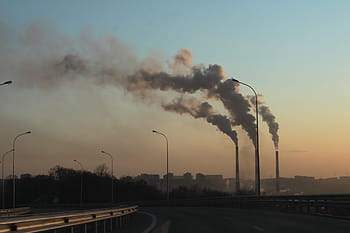Views: 100 Author: Site Editor Publish Time: 2023-10-18 Origin: Site








As the threat of air pollution continues to persist, Air purifiers have increased in popularity over the years due to their ability to filter and clean the air we breathe. However, many people are still uncertain if an air purifier is worth it. Actually, Air purifiers are a great way to filter air in your home organically and effectively.
When it comes to air pollution, it is usually associated with vehicle emissions, clouds of debris over a large city, and wildfire smoke. Although these are all forms of air pollution, people fail to realize it can also form in their own homes. Indoor air pollution can be cooking smoke, chemical cleansers and disinfectants, pet dander, and microorganisms like bacteria and viruses.


(Source: pxfuel.com)
According to the United States Environmental Protection Agency (EPA), indoor levels of pollutants may be two to five times – and occasionally more than 100 times – higher than outdoor levels.
Without air purification systems in place, the health impacts can come in various forms:
- Eye, nose, and throat irritation
- Aggravated asthma
- Irregular heartbeats
- Headaches
- Cardiovascular diseases
- Respiratory diseases


(Source: istockphoto.com)
Air purification can help prevent these troubling outcomes from occurring over time. However, if air purification systems were to be introduced some changes could be noticed in a matter of months. As in:
- Reduced allergy symptoms
- Reduced nasal congestion
- Reduced asthma symptoms
With the right air purifier, it can help prevent life-altering health implications in the long run and improve your quality of life in a matter of months.
Did you know that, over 80% of our time is spent indoors? And the amount of air we breathe in is over 10 times that of the food we consume. That's why Indoor Odors are crucial to our health. But how to eliminate indoor odors? Do air purifiers eliminate odors? The short answer is “Yes”. Read on to know the effectiveness of air purifiers in reducing indoor odors.
Indoor odors can be caused by a variety of factors, such as poor ventilation, mold and mildew growth, pet dander and hair, cooking and smoking, chemical off-gassing from household products, and even body odor.
It may be uncomfortable for many people. Whether it's the smell of cooking, pets, or mildew, they are all unpleasant odors. They can linger in the air. That makes it difficult to enjoy time spent indoors.
Short-term effects: Indoor odors may irritation of the eyes, nose, throat, and skin, as well as headaches, dizziness, and nausea.
Long-term effects: Long-term exposure to indoor odors can lead to respiratory problems, such as asthma and allergies, and may also increase the risks
of developing other health problems, including cancer.
Regularly Cleaning: Regularly vacuuming and mopping floors can help remove any trapped odors, while using air fresheners or essential oils can help mask odors. Replacing old furniture, carpets, and mattresses may also be necessary to eliminate unpleasant smells.
Open The Window: Opening the windows to allow fresh air in, it can help to reduce musty smells.
Use Plants: Plants can also help naturally filter the air in a room, which can help reduce indoor odors.
Use An Air Purifier:For tougher odors such as smoke or pet odors, the right air purifier may be necessary to completely remove the smell from your home.
An Official Workshop Report from the American Thoracic Society says “Cleaning indoor air with central system filters or portable room air purifiers”.
Air purifiers work by filtering the air in your home and removing impurities such as dust, pollen, and bacteria. Many air purifiers also come equipped with activated carbon filters, which are specifically designed to target odors and volatile organic compounds (VOCs). Activated carbon filters use a process called adsorption to trap odor molecules and prevent them from recirculating back into the air.
Here are a few tips for using air purifiers to effectively reduce indoor odors:
Choose the right size air purifier for your room: Air purifiers are designed to work within a specific square footage range. Be sure to choose an air purifier that is appropriate for the size of the room you want to use it in.
Keep your air purifier running continuously: To effectively reduce indoor odors, it's important to keep your air purifier running continuously. This will ensure that the air in your home is constantly being filtered and purified.
Change your filters regularly: The effectiveness of your air purifier will depend on the quality of your filters. If you use HEPA air purifier,be sure to change your filters regularly, as recommended by the manufacturer.If you use washable air purifier,like airdog air purifier,just wash them when it is dirty.To do this to ensure that your air purifier is working at its best.
It shown by Scientific research, purifiers can reduce the number of the use of HEPA air purifiers reduced pollen levels by up to 50%. Another research said that the using of air purifiers will reduce the symptoms of allergy.
How air purifiers work for allergens
Air purifiers use filters to collect and remove pollutants, allergens, and particles in the air. HEPA filters are particularly effective at capturing tiny particles such as pollen, pet dander, and dust mites. Some air purifiers use activated carbon filters to remove odors, volatile organic compounds, and smoke, such as Airdog air purifiers,which can eliminate up to 99.9% of Harmful Particles, 99.9% of PM 2.5, and 99% of Chemical Toxins in the air. Air purifiers work by circulating the air in a room, drawing it through the filters, and then releasing clean air back into the room.
The short answer is yes.
Dust is a major problem in many homes. There are so many different reasons why people might want to remove dust from their homes. For example, some people might want cleaner air because they have allergies or asthma and others might want cleaner surfaces because they have children. And it can be a big hassle to remove.
There are many different ways to remove dust from your home:
1. One of the most common ways is to sweep it up, but this can take a lot of time and effort. You also have to make sure that you get all the dust that has been kicked up by sweeping.
2. Another way is to vacuum it up, but some people think that this leaves behind too much dirt and debris.
3. A third way is to wipe it away with a cloth or mop, but this can be difficult for people with certain allergies or asthma.
4. The best way for most people is to use an air purifier because it removes all the dust in your home without any extra work on your part.
An air purifier will capture airborne particles such as dust, pollen, pet dander, smoke, and other allergens that can carry mold and mildew spores. Reducing the number of these particles in the air, it will help to reduce the amount of Mold and mildew in your home.
How do you know if an air purifier is helping with Mold and mildew? There are a few signs to look for that will help you determine if your air purifier is working correctly.
Smell - Mold and mildew generally give your home a ‘musty’ smell. Within a couple of days of using your air purifier, this smell should dissipate, leaving your home smelling clean.
Air test kits - You can purchase a single-use home test kit to see how well your air purifier is working. Each one works slightly differently so make sure to follow the instructions.
AQI number of air purifiers - Such as Airdog air purifiers, you could see the effect with your own eyes! You will notice the AQI (Air Quality Index) number decreasing when the air purifier is on.
Air filter of air purifier - Such as Airdog air purifier, after using Airdog for a week, you can actually see many of the pollutants absorbed on the collecting plates when you take the plates out to clean.
Has the Mold Come Back?
If you have taken every measure to eliminate the mold by removing as much of it as you can and fixing the original cause of the dampness, you should find that the air purifier prevents spores from repopulating your home and causing more mold to grow. Digital air quality monitors - If you want to consistently keep track of your air quality, you may want to purchase a digital air quality monitor, which can detect most particles in the air and record these. This can also help you to monitor when it is time to change the filter in your air purifier.
Several types of air purifiers are out there, which can be difficult when deciding what air purifier is best for your home.
Here are a few filters that are on the market today:
HEPA filters:
According to the EPA, a HEPA filter is a mechanical filter that can theoretically remove at least 99.97% of dust, pollen, mold bacteria, and any airborne particles with a size of 0.3 microns. Theoretically, it sounds amazing, but smoke, odor, industrial emissions, and some viruses are smaller than 0.3 microns that HEPA filters can’t collect. HEPA filters can also be costly as the filter needs to be replaced every 6 months. If not replaced in time, it will be left clogged with micro-organisms and other toxic pollutants.
TPA filters:
According to Airdog, TPA technology filters are an active filtration technology that generates a high-voltage electric field that destroys 99.9% of harmful particles, 99.9% of particles down to 0.0146 microns, and 99% of chemical toxins that are in the air. Unlike HEPA filters, TPA filters don’t require you to replace their filters, only a simple wash with soap and water. This not only ensures the filters never lose their integrity, but it also acts as a zero-waste feature.
Electrostatic Precipatators:
An electrostatic precipitator uses an electrostatic charge to remove particles with high-voltage electrical energy, but maintenance can be exhausting. Due to the fact that the filter needs to be replaced 4 times a year and can release ozone which can lead to more harm than good for your lungs.
According to a review by Speciality Air, the X5 Air Purifier has 4.8 out of 5 star reviews including its power, features, and performance. It includes 5 filters which includes the electrostatic filter that eliminates bacteria, viruses, and mold on contact. This air purifier is controlled via remote or through the Airdog App.
Check out the rest of our air purifiers including the X3, X8, and Car Air Purifier. Reach out to us at any time if you have any questions or comments. We'd be more than happy to answer them!
